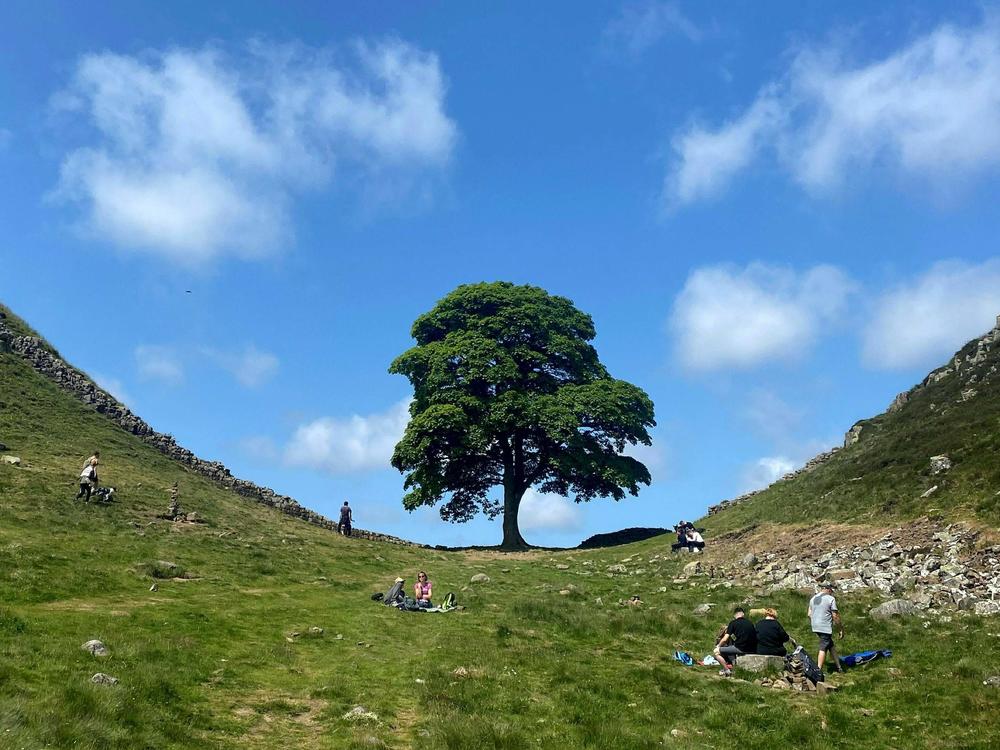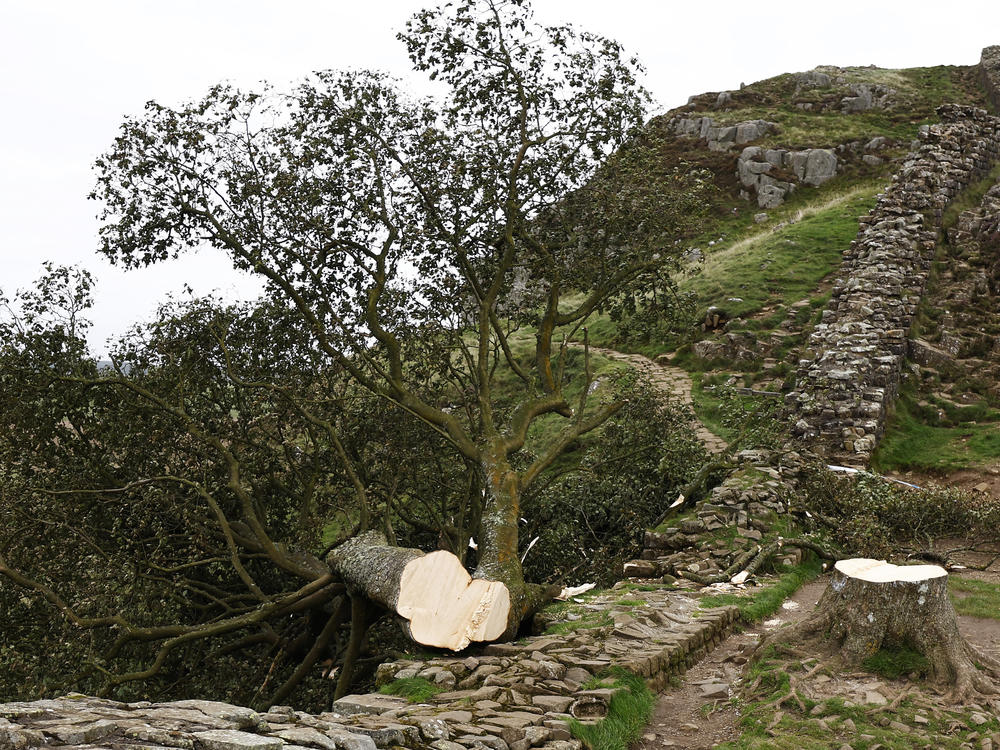Section Branding
Header Content
Despair flows after England's Sycamore Gap tree is cut down. Could it regrow?
Primary Content
LONDON — The tree was special, giving visitors to Hadrian's Wall in Northumberland, England, a magical backdrop for picnics, proposals and vacation photos — and supplying the rest of us with an image that looked to be a pinnacle of nature's timeless peace.
But the famous Sycamore Gap tree was cut down this week, setting off ripples of shock, sadness and anger after a well-loved landmark was reduced to a stump.
"It felt genuinely mythical," said writer Katy Madgwick, describing her family's first visit to the tree in May. "I'm a bit heartbroken tbh. My kids will be too."
Northumbria Police said officers arrested a 16-year-old boy on Thursday in connection to "what we believe was a deliberate act of vandalism."
As the investigation continues, efforts are also underway to salvage the tree somehow, through regrowth or grafting — or starting over from a new seed.
The tree represented centuries of history
The tree grew for centuries in a gully along Hadrian's Wall, the ancient frontier of the Roman Empire (and a UNESCO World Heritage Site) in what is now northern England. Thriving in a landscape of rocks and grass, the tree was iconic, featuring on postcards and even in Kevin Costner's 1991 film, Robin Hood: Prince Of Thieves.
"We believe the tree to be around 200 years old," Jeannette Heard of the National Trust told NPR. She added, "We are going to protect the remaining tree stump to see if it may grow again so that at least the legacy from the original tree endures."
Environmentalists are mourning this act of alleged vandalism, and people are laying flowers at the site. The tree stood near the village of Once Brewed, roughly an hour's drive west of Newcastle upon Tyne.
"I honestly got teary when I saw the news. Especially for us Geordies it is such a special place - an iconic symbol," one commenter wrote on Instagram, using the term that refers to people from that part of Northern England.
The tree might regrow, but not in the same way
The National Trust's rangers are working to salvage what they can from the famous tree, hoping to preserve its genetic legacy.
"Regrowth from the original tree stump should be possible but it's too early to tell," Heard said. Even if that happens, she added, the tree's dramatic effect wouldn't be the same, as multiple stems would emerge rather than one.
Seeds and grafting are also being explored, Heard said: "Our ranger team have been on site today to collect seed and scion wood (i.e. this season's growth, which is suitable for grafting)."
"Although it's not the ideal time of year to attempt either, we will see if we can get some of the seeds to germinate and produce new trees," she said. The team also plans to use scion wood for grafting, and to combine individual growth buds onto rootstocks, with the goal of "retaining the tree's unique, genetic material."
The loss highlights a broader loss of trees
The Sycamore Gap tree is being seen as an emblem of that broader struggle, especially as the tragedy occurred at the same time as news that England is struggling to meet its goals of adding more tree cover.
News that the famous tree was sawed down emerged one day after the National Trust and other conservation groups released the U.K.'s 2023 State of Nature report, stressing the need to protect landscapes and stating, "the most important natural habitats are in poor condition."
"The UK now has less than half of its biodiversity remaining because of human activity," the report said.
Losing a landmark tree not through storms or disease but to a banal human act highlights the challenge of reversing that trend, conservation advocates say.
"There is a much wider message here — of the need to protect the natural world — which, after all, we are completely dependent on," said the London-based charity Trees for Streets.
Copyright 2023 NPR. To see more, visit https://www.npr.org.


